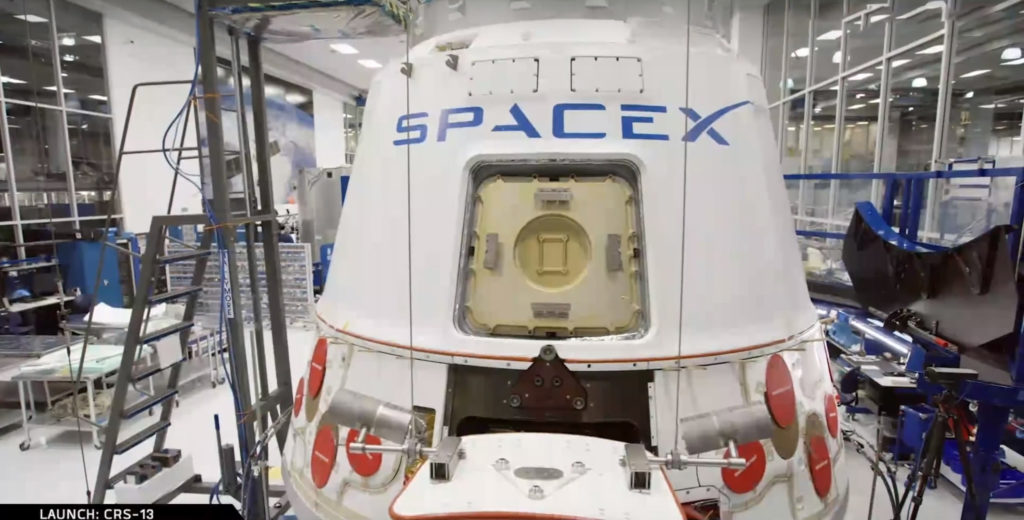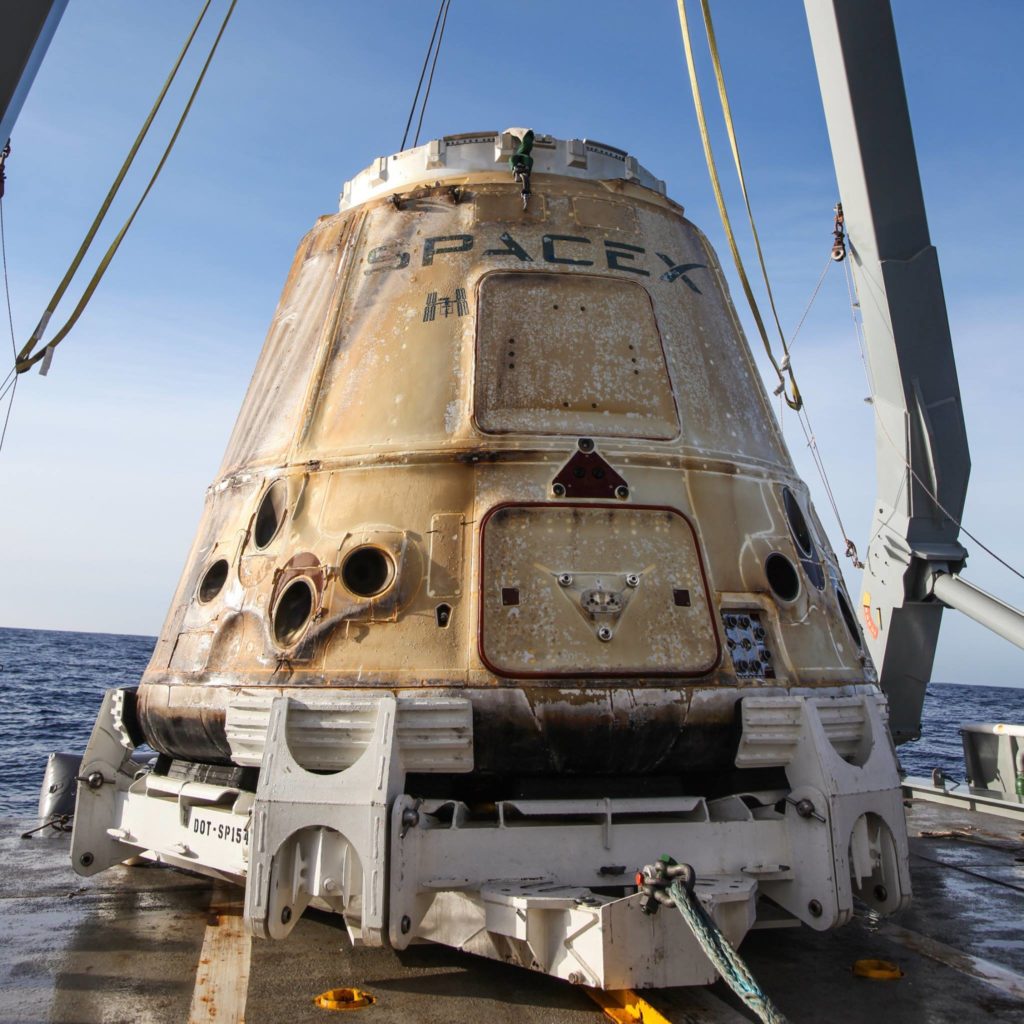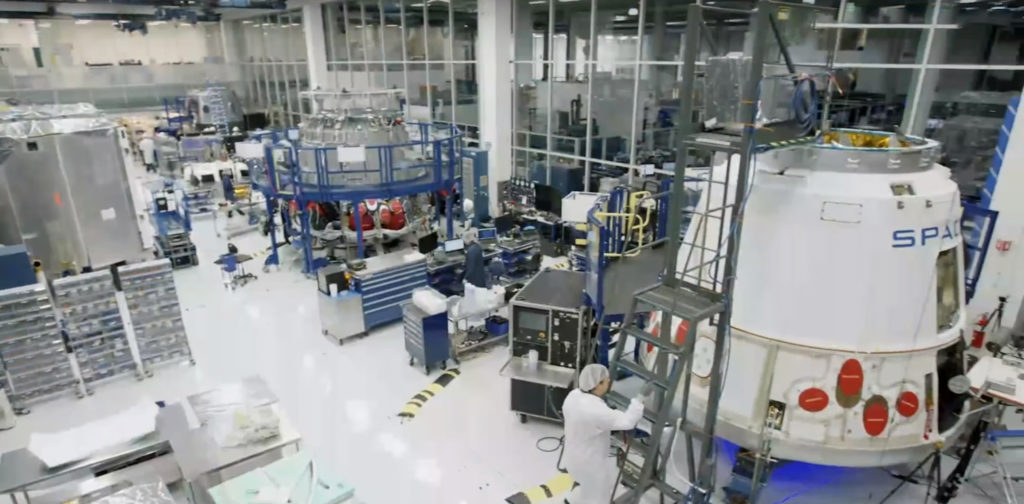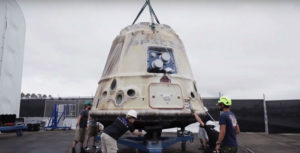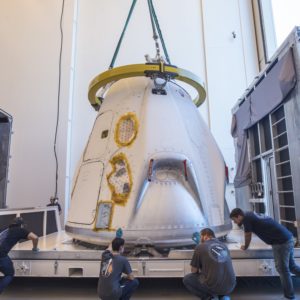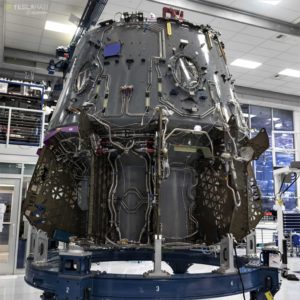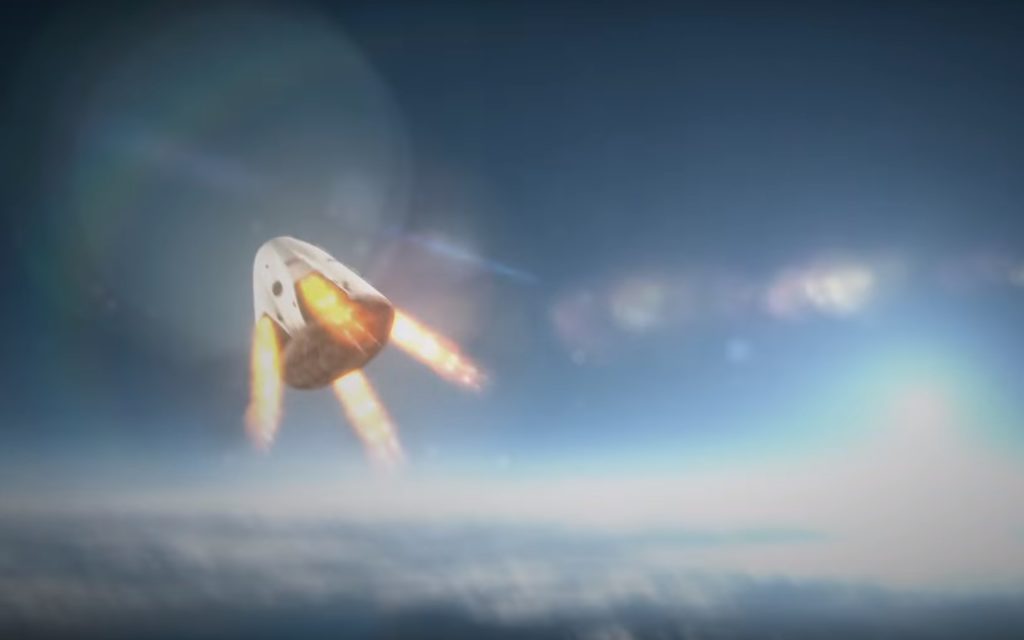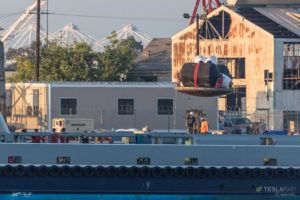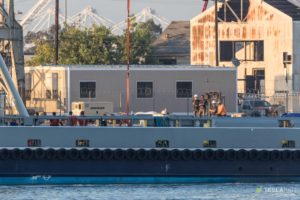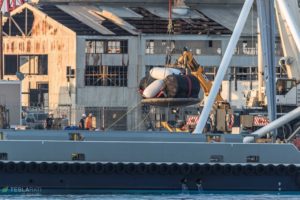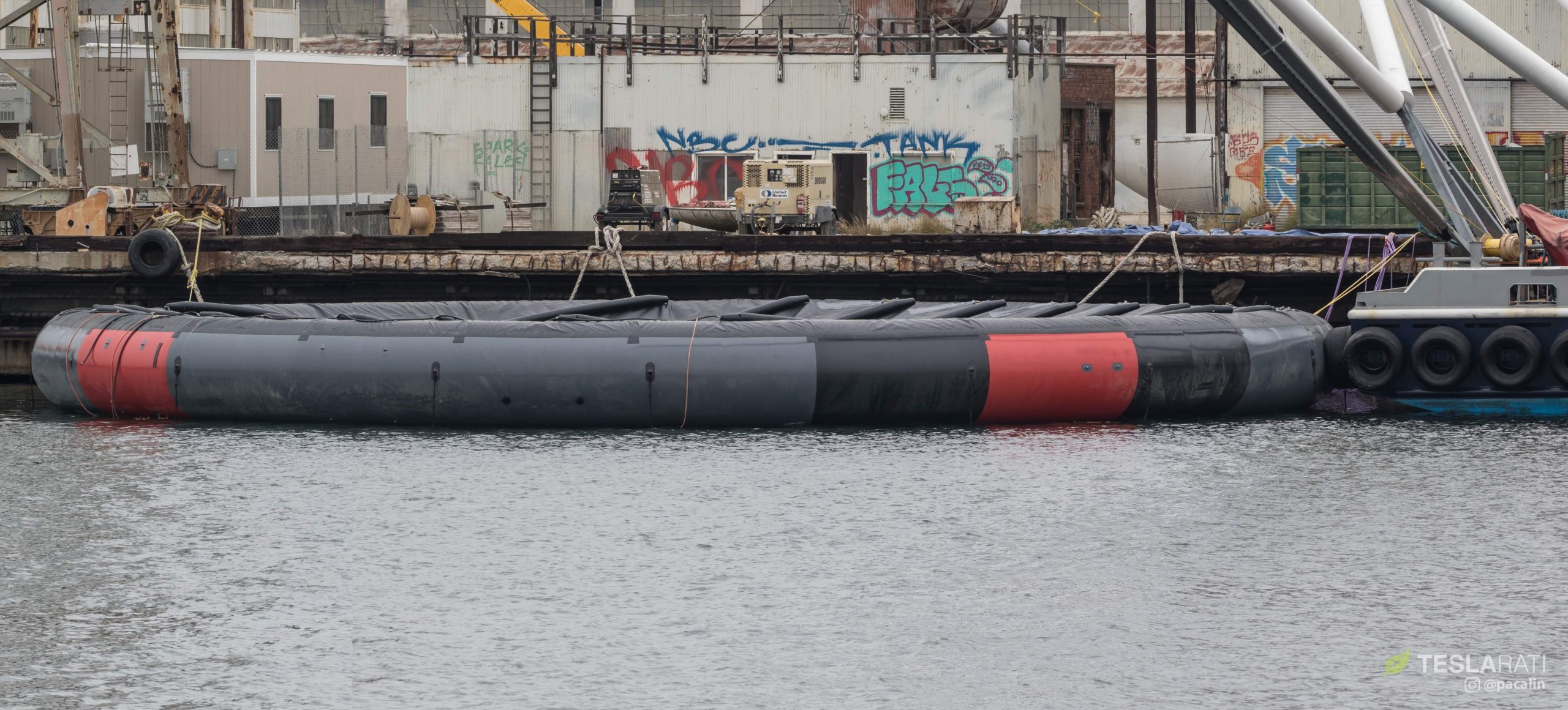
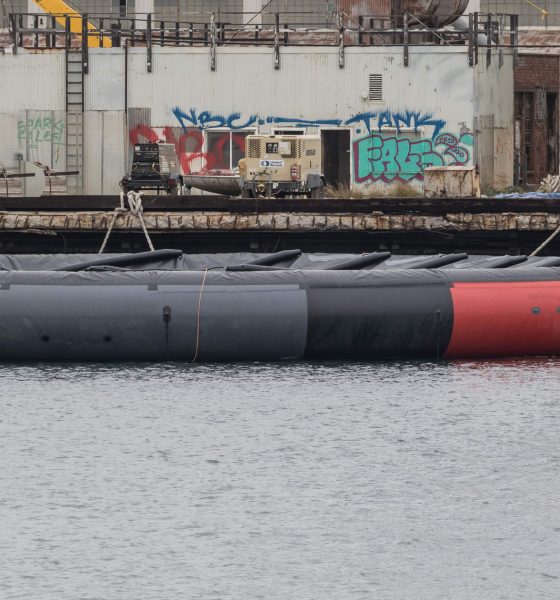
News
SpaceX gears up for Crew Dragon’s first recovery with a giant inflatable cushion
Paired with observations and comments from sources familiar with the company, all signs seem to indicate that SpaceX is planning to recover their first Crew Dragon spacecraft with a giant inflatable cushion, to be towed a hundred or so miles off the coast of California by one of the company’s Port of LA-stationed recovery vessels.
Despite a minor mishap during some sort of inaugural sea-trial of a custom Crew Dragon mass simulator, SpaceX technicians are pushing ahead with a test campaign intended properly characterize exactly how to best recover a Dragon while side-stepping around the problems caused by seawater immersion.
Inside the clean room at SpaceX HQ, Crew Dragon is nearing completion. This will be the capsule to make the first crewed flight, currently slated for April 2019.#spacex #CrewDragon @Teslarati pic.twitter.com/tjzuwfGV2O
— Pauline Acalin (@w00ki33) August 16, 2018
Why recover your Dragon?
First off, why would SpaceX choose to develop a new method of Dragon recovery – different than the company’s current experience with simply landing the capsules in the ocean – with the expectation that it will debut during the recovery of Crew Dragon after its very first demonstration mission (DM-1)? A huge number of unknowns and major questions remain, but the decision to attempt to avoid seawater immersion during the DM-1 Dragon recovery is very likely no coincidence.
Over the last several years, SpaceX engineers and technicians have learned a huge amount from recovering, refurbishing, and even reusing Cargo Dragons to resupply the International Space Station for NASA. Of all the lessons learned, the most unequivocal has to be a newfound appreciation for just how difficult it is to safely and reliably reuse spacecraft and rocket components after landing and being immersed in seawater. Despite SpaceX’s growing experience with reusing both Falcon 9 and Cargo Dragon, Dragons still typically require a bare minimum of 6-12 months of refurbishment before they are ready for another launch.
- SpaceX’s CRS-13 Cargo Dragon, capsule C108, seen near the end of its refurbishment. (SpaceX)
- A reused orbital spacecraft, Cargo Dragon, back on Earth after its second successful resupply mission. (SpaceX)
- All Crew and Cargo Dragons are built and refurbished in the same processing facility, a clean-room inside SpaceX’s Hawthorne, CA factory. (SpaceX)
For Crew Dragon’s DM-1 debut, it thus makes sense that SpaceX wants to recover the spacecraft in such a way that it is exceptionally easy to rapidly refurbish. Perhaps just several months after that capsule returns to Earth, currently expected no earlier than December 2018, SpaceX’s first crewed Crew Dragon demonstration’s tentative April 2019 launch debut will depend entirely on the completion and review of an In-Flight Abort (IFA) test planned just one month prior, March 2019.
The planned IFA test of Crew Dragon hinges entirely on DM-1 and Dragon refurbishment because the present plan (and launch schedule) absolutely depends on reflying DM-1’s Crew Dragon capsule, potentially recovered from orbit as few as three months prior.
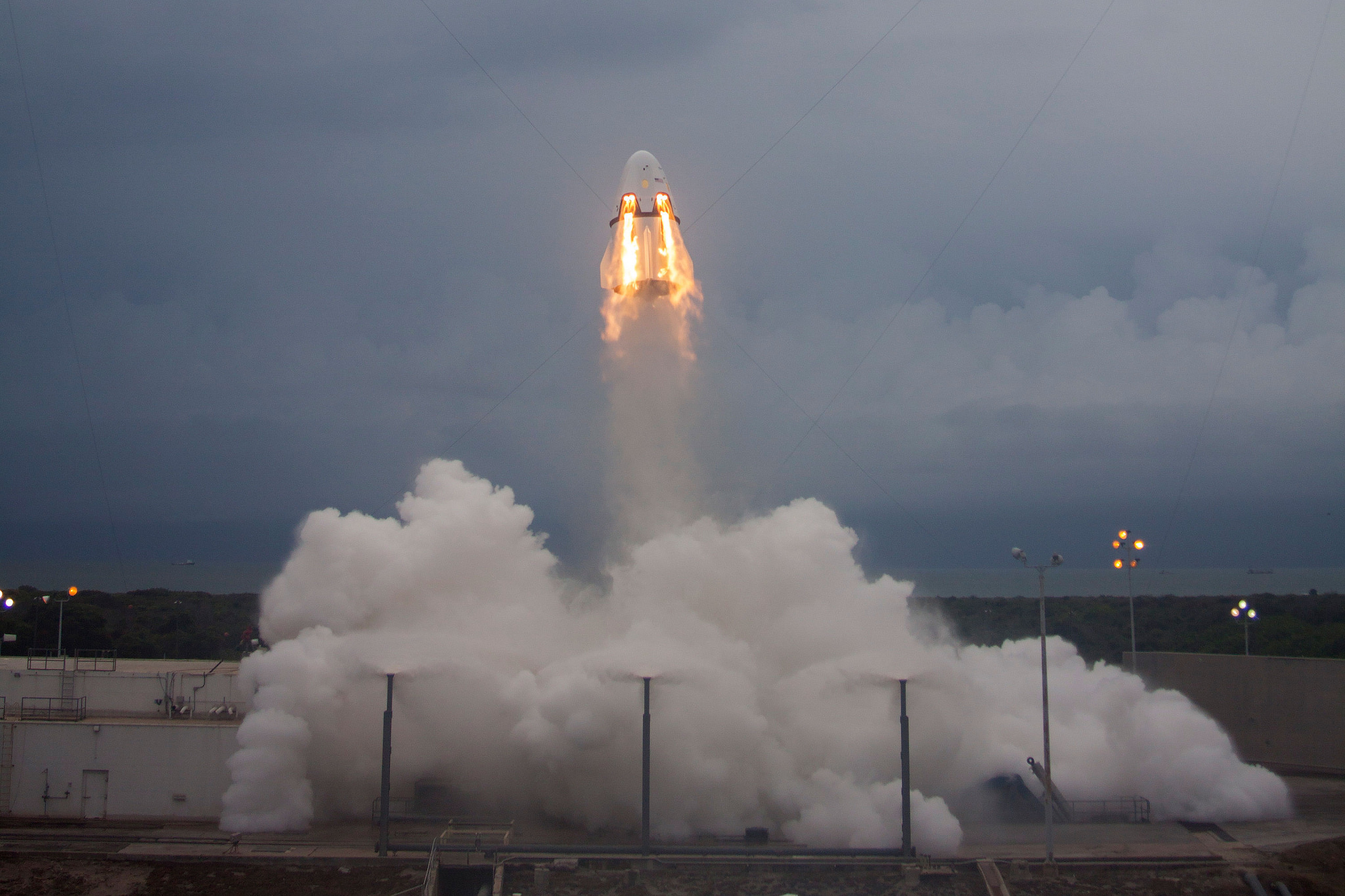
With a successful 2015 Pad Abort already under Crew Dragon’s belt, SpaceX voluntarily chose to conduct an additional complimentary in-flight abort not explicitly required by NASA, designed to demonstrate that Dragon will be able to safely extract astronauts from a failing rocket at the point of peak aerodynamic pressure (Max-Q). Essentially, a combination of successful aborts both on the launch pad and during Max-Q would theoretically demonstrate beyond any reasonable doubt that Crew Dragon really is capable of safely aborting a launch and protecting its astronauts at any point during launch.
Cargo Dragon has demonstrated that – apparently – no amount of heroics can refurbish the recovered spacecraft in just a small handful of months after seawater immersion, not without major changes to its design. As such, preventing that with some sort of inflatable cushion (or even Mr Steven’s net) would likely save many months of drying, cleaning, and requalification testing of all externally impacted components.
- Cargo Dragon returns to Earth looking rather well-done. (SpaceX)
- The first spaceworthy Crew Dragon capsule is already in Florida, preparing for its November 2018 launch debut. The same capsule will be refurbished and reflown as few as three months after recovery. (SpaceX)
- SpaceX Crew Dragon capsule C203 – then assigned DM-2 – is seen here in August 2018. (Pauline Acalin)
How to recover your Dragon
While the “why” is fairly obvious at this point, the “how” of actually making such a cushioned recovery happen is far less clear. Still, we at least know from several recent comments from SpaceX CEO Elon Musk and statements made in environmental impact analyses that the company has been considering such recoveries for some time.
Despite the fact that Crew Dragon’s original propulsive landing capability was nixed due to the unlikelihood of NASA ever certifying it for crewed landings and the expense required to attempt that certification, there is still clearly some latent interest (and value) in precisely landing Crew Dragon, even if only to speed up capsule and crew recovery after splashdown. A March 2018 preliminary environmental impact analysis of Gulf of Mexico Dragon recoveries – as a backup to bad weather in the Pacific and Atlantic – made the interest in precision exceptionally clear.
“The splashdown zone is a circle with a radius of approximately 5.4 nautical miles. … Dragon has been designed to perform precision landings in order to minimize the size of the splashdown zone and recovery time.”
Admittedly, a circle with a diameter of 10.8 nautical miles (20 km) does not exactly scream “precision” and ~20 km is likely around a thousand times less precise than what’s needed to land on the 30m-diameter inflatable structure present at Berth 240, but it’s probable that the splashdown zone as discussed is a worst-case scenario meant to give SpaceX’s recovery team plenty of wiggle room.
- Crew Dragon was originally designed with propulsive landings in mind, much like Falcon 9’s booster recovery. (SpaceX)
- In place of propulsive landing, it appears that a giant inflatable cushion is the new solution for quick reuse. (Pauline Acalin)
Musk also took a few seconds of a Falcon Heavy post-launch press conference to briefly describe Mr Steven, and he just so happened to touch on fairing and Dragon recovery:
“And we’ve got a special boat to catch the fairing. … It’s like a giant catcher’s mitt in boat form. I think we might be able to do the same thing with Dragon. So…if NASA wants us to, we can try to catch Dragon. Literally, it’s meant for the fairing, but it would work for Dragon, too.” – Elon Musk
Mr Steven takes one for the team
Even more experimental than fairing recovery, SpaceX happened to experience a minor incident while attempting to test aspects of its prototype Dragon catcher apparatus in early August. Partially captured by Teslarati photographer Pauline Acalin, SpaceX technicians were lifting a Crew Dragon heatshield mass simulator with a healthy topping of buoys onto Mr Steven. Moments after it was lowered onto the deck, the whole setup disappeared below the vessel’s side rails in a massive boom.
- The Crew Dragon mass simulator is loaded onto Mr Steven for the first time, August 3rd. (Pauline Acalin)
- Shortly after touchdown, the mass sim disappeared with a deafening boom, presumably breaking through Mr Steven’s wooden deck. (Pauline Acalin)
- SpaceX technicians lift a Crew Dragon mass simulator off of Mr Steven’s deck after accidentally breaking it. (Pauline Acalin)
According to sources familiar with SpaceX’s recovery fleet, the mishap was much less severe than the deafening noise it produced seemed to indicate from the sidelines. They described the aftermath as “an annoying accident” that was unlikely to take any significant amount of time to repair. More likely than not, Mr Steven’s wooden deck suffered some level of structural degradation after several years of active use, something that SpaceX technicians only discovered after loading (or maybe dropping) a heavy Dragon mass simulator aboard.
Regardless, one could certainly say that the test in question was more or less a success, as it most certainly demonstrated whether Mr Steven’s deck was actually capable of supporting the heavy test article (it was not). A few repairs and structural reinforcements later, the vessel is likely already back in working order, with photos taken on August 19th showing that the focus has returned to the vessel’s arms (two of which must have been removed earlier this week).
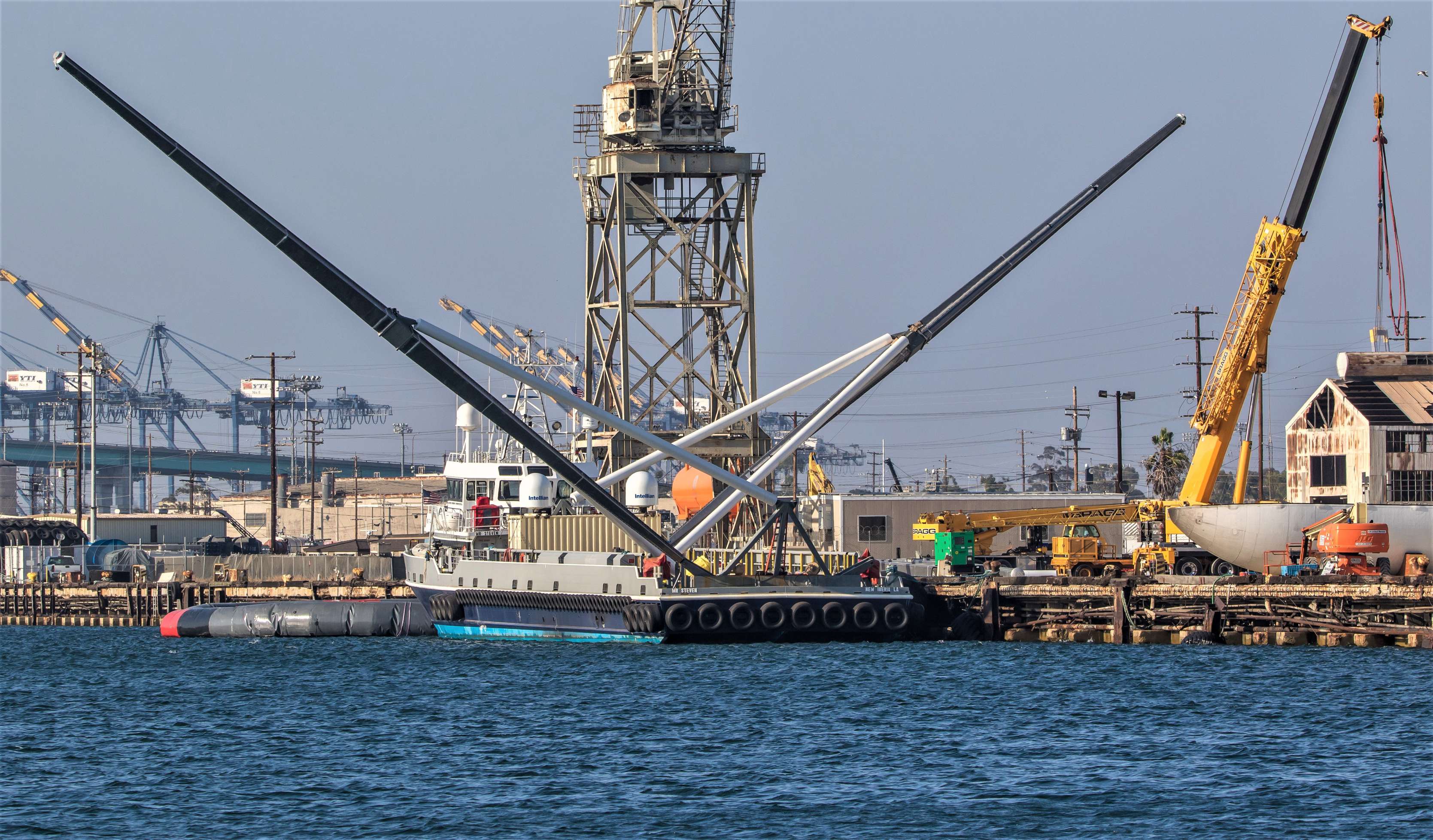
For prompt updates, on-the-ground perspectives, and unique glimpses of SpaceX’s rocket recovery fleet check out our brand new LaunchPad and LandingZone newsletters!

Elon Musk
Tesla’s Elon Musk: 10 billion miles needed for safe Unsupervised FSD
As per the CEO, roughly 10 billion miles of training data are required due to reality’s “super long tail of complexity.”

Tesla CEO Elon Musk has provided an updated estimate for the training data needed to achieve truly safe unsupervised Full Self-Driving (FSD).
As per the CEO, roughly 10 billion miles of training data are required due to reality’s “super long tail of complexity.”
10 billion miles of training data
Musk comment came as a reply to Apple and Rivian alum Paul Beisel, who posted an analysis on X about the gap between tech demonstrations and real-world products. In his post, Beisel highlighted Tesla’s data-driven lead in autonomy, and he also argued that it would not be easy for rivals to become a legitimate competitor to FSD quickly.
“The notion that someone can ‘catch up’ to this problem primarily through simulation and limited on-road exposure strikes me as deeply naive. This is not a demo problem. It is a scale, data, and iteration problem— and Tesla is already far, far down that road while others are just getting started,” Beisel wrote.
Musk responded to Beisel’s post, stating that “Roughly 10 billion miles of training data is needed to achieve safe unsupervised self-driving. Reality has a super long tail of complexity.” This is quite interesting considering that in his Master Plan Part Deux, Elon Musk estimated that worldwide regulatory approval for autonomous driving would require around 6 billion miles.
FSD’s total training miles
As 2025 came to a close, Tesla community members observed that FSD was already nearing 7 billion miles driven, with over 2.5 billion miles being from inner city roads. The 7-billion-mile mark was passed just a few days later. This suggests that Tesla is likely the company today with the most training data for its autonomous driving program.
The difficulties of achieving autonomy were referenced by Elon Musk recently, when he commented on Nvidia’s Alpamayo program. As per Musk, “they will find that it’s easy to get to 99% and then super hard to solve the long tail of the distribution.” These sentiments were echoed by Tesla VP for AI software Ashok Elluswamy, who also noted on X that “the long tail is sooo long, that most people can’t grasp it.”
News
Tesla earns top honors at MotorTrend’s SDV Innovator Awards
MotorTrend’s SDV Awards were presented during CES 2026 in Las Vegas.

Tesla emerged as one of the most recognized automakers at MotorTrend’s 2026 Software-Defined Vehicle (SDV) Innovator Awards.
As could be seen in a press release from the publication, two key Tesla employees were honored for their work on AI, autonomy, and vehicle software. MotorTrend’s SDV Awards were presented during CES 2026 in Las Vegas.
Tesla leaders and engineers recognized
The fourth annual SDV Innovator Awards celebrate pioneers and experts who are pushing the automotive industry deeper into software-driven development. Among the most notable honorees for this year was Ashok Elluswamy, Tesla’s Vice President of AI Software, who received a Pioneer Award for his role in advancing artificial intelligence and autonomy across the company’s vehicle lineup.
Tesla also secured recognition in the Expert category, with Lawson Fulton, a staff Autopilot machine learning engineer, honored for his contributions to Tesla’s driver-assistance and autonomous systems.
Tesla’s software-first strategy
While automakers like General Motors, Ford, and Rivian also received recognition, Tesla’s multiple awards stood out given the company’s outsized role in popularizing software-defined vehicles over the past decade. From frequent OTA updates to its data-driven approach to autonomy, Tesla has consistently treated vehicles as evolving software platforms rather than static products.
This has made Tesla’s vehicles very unique in their respective sectors, as they are arguably the only cars that objectively get better over time. This is especially true for vehicles that are loaded with the company’s Full Self-Driving system, which are getting progressively more intelligent and autonomous over time. The majority of Tesla’s updates to its vehicles are free as well, which is very much appreciated by customers worldwide.
Elon Musk
Judge clears path for Elon Musk’s OpenAI lawsuit to go before a jury
The decision maintains Musk’s claims that OpenAI’s shift toward a for-profit structure violated early assurances made to him as a co-founder.

A U.S. judge has ruled that Elon Musk’s lawsuit accusing OpenAI of abandoning its founding nonprofit mission can proceed to a jury trial.
The decision maintains Musk’s claims that OpenAI’s shift toward a for-profit structure violated early assurances made to him as a co-founder. These claims are directly opposed by OpenAI.
Judge says disputed facts warrant a trial
At a hearing in Oakland, U.S. District Judge Yvonne Gonzalez Rogers stated that there was “plenty of evidence” suggesting that OpenAI leaders had promised that the organization’s original nonprofit structure would be maintained. She ruled that those disputed facts should be evaluated by a jury at a trial in March rather than decided by the court at this stage, as noted in a Reuters report.
Musk helped co-found OpenAI in 2015 but left the organization in 2018. In his lawsuit, he argued that he contributed roughly $38 million, or about 60% of OpenAI’s early funding, based on assurances that the company would remain a nonprofit dedicated to the public benefit. He is seeking unspecified monetary damages tied to what he describes as “ill-gotten gains.”
OpenAI, however, has repeatedly rejected Musk’s allegations. The company has stated that Musk’s claims were baseless and part of a pattern of harassment.
Rivalries and Microsoft ties
The case unfolds against the backdrop of intensifying competition in generative artificial intelligence. Musk now runs xAI, whose Grok chatbot competes directly with OpenAI’s flagship ChatGPT. OpenAI has argued that Musk is a frustrated commercial rival who is simply attempting to slow down a market leader.
The lawsuit also names Microsoft as a defendant, citing its multibillion-dollar partnerships with OpenAI. Microsoft has urged the court to dismiss the claims against it, arguing there is no evidence it aided or abetted any alleged misconduct. Lawyers for OpenAI have also pushed for the case to be thrown out, claiming that Musk failed to show sufficient factual basis for claims such as fraud and breach of contract.
Judge Gonzalez Rogers, however, declined to end the case at this stage, noting that a jury would also need to consider whether Musk filed the lawsuit within the applicable statute of limitations. Still, the dispute between Elon Musk and OpenAI is now headed for a high-profile jury trial in the coming months.
